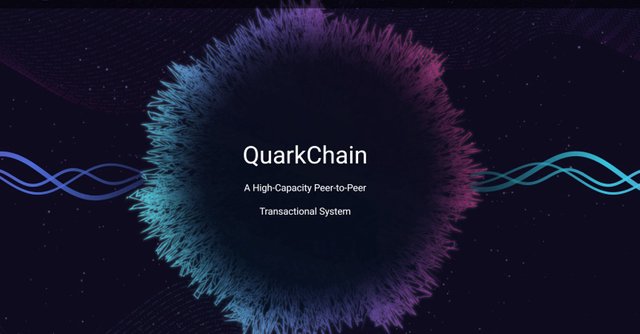QuarkChain (QKC) | A High-Capacity Peer-to-Peer Transactional System

QuarkChain aims address the scalability issue and become a platform that offers an increased number of transaction per second while maintaining security and decentralization. The reason for this product as they mention in their white paper is that current blockchain solutions offer low capacity in terms of volume of transactions.
The end goal that they mention in their whitepaper is for QuarkChain to support distributed social media, high frequency trading, Internet of Things, gaming and financial payments.
Design
They already state that QuarkChain can deliver over one million transactions per second due to its innovative permissionless blockchain architecture. In essence, QuarkChain's design will enable seamless cross-shard transaction. This is something that, they say in their white paper, ethereum will take another 3 to 5 years to fully support.
They have an MVP with about 2100 transactions per second, and promised to open source their code on Q2 2018. A public testnet will be available at the end of Q2.
Architecture
So basically, QuarkChain is made up of two layers of blockchains. The first layer is an elastic sharding blockchain and the second layer a root blockchain that has the purpose of confirming the blocks from the first layer. The first layer is going to be built in a way that allows for it to be resharded as need be and will not require the root layer to be changed.
Sharding
Sharding is, in essence, a type of database partitioning that separates very large databases the into smaller, faster and more easily managed parts. Each of these parts is called a data shards.
Double spending attach
In the video below I have explained the double spending attack, and QuarkChain will prevent that by guaranteeing security by implementing a market-driven collaborative type of mining. In other words, they will use a game-theoretic framework so that at least fifty percent of the overall hash power is allocated to the root chain.
In terms of preventing centralization, they will allow for multiple cheap nodes to form a cluster and in that way substitute a super-full node. They also mention that this is usually an issue with blockchain networks with a high number of transactions executed per second.
Smart Contracts
Another important point about QuarkChain is that they will also support smart contracts by using the Ethereum Virtual Machine. This means that decentralized applications built on the Ethereum Virtual Machine can be deployed directly on the QuarkChain platform.
Conclusion
That's all about QuarkChain. In essence, they want to address the scalability issue and become a platform that offers an increased number of transaction per second while maintaining security and decentralization.
The problem they are focusing on is that current blockchain solutions offer low capacity in terms of volume of transactions.
So, their solution is to use a reshardable two-layered blockchain with efficient cross-shard transactions. The speed of these cross-shard transactions should increase constantly as the number of shards increase.
- QuarkChain website: https://www.quarkchain.io/
- Telegram group: https://t.me/quarkchainio
- ANN: https://bitcointalk.org/index.php?topic=3587645.0
Let me know your thoughts about this product in the comments, please follow if you're not already and as always thank you for reading and I'll see you next time :)